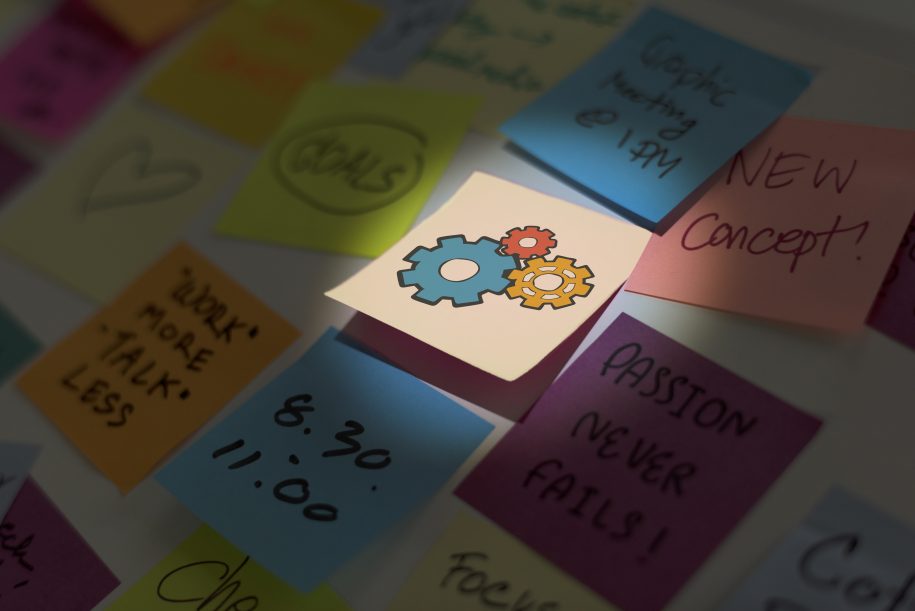Introduction to Agile Development and Sprints
Agile development has revolutionized the software industry, allowing teams to deliver high-quality products more efficiently. At the heart of Agile is the concept of sprints, which are short, time-boxed iterations where teams work collaboratively to complete a set of prioritized tasks. One crucial aspect of a successful sprint is the retrospective. In this article, we will delve into the world of sprint retrospectives and explore their significance in mastering Agile development.
What is a Sprint Retrospective?
A sprint retrospective is a dedicated meeting held at the end of each sprint. In these meetings, the team reflects on their performance, identifies areas of improvement, and determines action items for future sprints. It provides an opportunity for the team to learn from their experiences and continuously refine their processes. The retrospective is a fundamental component of Agile development as it promotes a culture of continuous improvement and empowers teams to deliver better results with each sprint.
What is the Purpose of the Sprint Retrospective?
The main purpose of a sprint retrospective is to facilitate open and honest communication within the team. It serves as a platform for team members to share their perspectives, celebrate successes, discuss challenges, and propose solutions. By creating a safe and inclusive environment, the retrospective encourages individuals to voice their opinions, fostering a sense of ownership and accountability. Ultimately, the goal is to identify areas of improvement and implement changes that will enhance the team’s effectiveness and productivity.
Key Objectives of a Sprint Retrospective
A sprint retrospective aims to achieve several key objectives. Firstly, it is an opportunity for the team to reflect on the previous sprint and assess their performance. By analyzing what went well and what could have been done better, the team can identify patterns and trends, enabling them to make informed decisions moving forward. Secondly, the retrospective allows for the identification of potential bottlenecks, obstacles, or inefficiencies in the team’s processes. By addressing these issues, the team can streamline their workflow and maximize productivity. Lastly, the retrospective aims to empower the team by encouraging them to take ownership of their work and contribute to the continuous improvement of their processes.
Importance of Sprint Retrospectives in Agile Development
Sprint retrospectives play a crucial role in Agile development for several reasons. Firstly, they foster a culture of learning and continuous improvement. By regularly reflecting on their performance and processes, the team can identify and address any shortcomings or inefficiencies. This iterative approach allows for incremental enhancements over time, leading to higher quality deliverables and increased customer satisfaction. Secondly, retrospectives promote transparency and collaboration within the team. By encouraging open and honest communication, team members can share their perspectives and insights, leading to a deeper understanding of each other’s roles and responsibilities. This shared knowledge enables the team to work more cohesively, resulting in improved collaboration and productivity. Lastly, retrospectives provide an opportunity for the team to celebrate their achievements. By acknowledging their successes, the team’s morale is boosted, creating a positive work environment that fosters creativity and innovation.
What is the Sprint Retrospective Structure?
The sprint retrospective typically follows a structured format to ensure a productive and focused discussion. While there are variations, the most commonly used structure consists of five key steps:
- Set the Stage: The team comes together, and the facilitator sets the tone for the meeting, emphasizing the importance of open communication and a safe environment for sharing.
- Gather Data: The team reviews the data collected during the sprint, such as user feedback, metrics, and any other relevant information.
- Generate Insights: Through a facilitated discussion, the team shares their observations, identifies patterns or trends, and gains insights into the sprint’s successes and challenges.
- Decide What to Do: The team collectively determines actionable items based on the insights gained. These action items are intended to address the identified areas of improvement.
- Close the Retrospective: The retrospective concludes with a summary of the action items and a commitment from the team to implement the agreed-upon changes in the upcoming sprint.
By following this structure, the team ensures a comprehensive review of the sprint and effective decision-making for future iterations.

Which are Appropriate Topics for Discussion in a Sprint Retrospective?
During a sprint retrospective, various pertinent topics can be discussed to pinpoint areas of improvement and establish action items for forthcoming sprints. These discussions are aimed at fostering a more effective and cohesive team dynamic. Communication is often a focal point, with the team exploring methods to enhance its efficacy further. Process efficiency is also assessed, with a focus on identifying any bottlenecks or areas for optimization within the team’s processes. Additionally, collaboration is evaluated to determine opportunities for enhanced teamwork. Individual contributions are recognized and appreciated, with discussions centered on leveraging each team member’s strengths more effectively. Evaluating the tools and resources utilized during the sprint and discussing potential improvements or alternatives is another crucial aspect of the retrospective. By addressing these topics, the team can develop actionable steps to bolster performance and facilitate continuous improvement.
How to Conduct a Successful Sprint Retrospective
Conducting a successful sprint retrospective requires careful planning and execution. Here are some key steps to ensure a productive retrospective:
1. Prepare: Collect relevant data, such as user feedback, performance metrics, and team observations, before the meeting. Share this information with the team to facilitate informed discussions.
2. Create a Safe Environment: Set the stage for open and honest communication by emphasizing trust, respect, and confidentiality. Encourage active participation from all team members.
3. Facilitate the Discussion: As the facilitator, guide the team through each step of the retrospective structure. Ensure that everyone has an opportunity to speak and actively listen to each other’s perspectives.
4. Focus on Improvement: Keep the discussions focused on identifying areas of improvement and actionable steps. Avoid assigning blame or dwelling on past mistakes.
5. Document Action Items: Clearly document the action items and assign responsible team members. Ensure that these action items are realistic, achievable, and measurable.
6. Follow Up: Regularly review the progress of the action items and provide support to team members as needed. Celebrate successes and address any challenges along the way.
By following these guidelines, teams can conduct effective sprint retrospectives that drive continuous improvement and enhance their Agile development practices.
What are the 3 Retrospective Questions?
During a sprint retrospective, it is common to ask three key questions to facilitate meaningful discussions and gather valuable insights:
- What went well during the sprint?: This question encourages team members to reflect on their successes and identify practices or strategies that contributed to positive outcomes.
- What could have been done better?: By focusing on areas for improvement, this question helps the team identify any shortcomings or challenges faced during the sprint. It promotes a culture of self-reflection and continuous learning.
- What actions can we take to improve?: This question aims to generate actionable steps for the team to implement in future sprints. By collectively brainstorming solutions, the team empowers themselves to drive positive change.
Asking these three retrospective questions provides a structured framework for productive discussions and enables the team to identify specific areas for improvement.
Common Challenges in Sprint Retrospectives and How to Overcome Them
While sprint retrospectives are invaluable for Agile development, they can present some challenges. Here are a few common challenges and strategies to overcome them:
1. Lack of Engagement: Some team members may be hesitant to actively participate in the retrospective. To overcome this, create a safe and inclusive environment, actively encourage contributions, and demonstrate the value of each individual’s input.
2. Blame Culture: If team members resort to blaming each other for failures, it can hinder productive discussions. Shift the focus from blaming individuals to exploring the underlying causes of issues and identifying solutions as a team.
3. Dominant Voices: A few team members may dominate the discussions, while others remain silent. Encourage equal participation by explicitly inviting quieter members to share their thoughts and ideas.
4. Lack of Follow-through: Without proper follow-through, action items identified during the retrospective may not be implemented effectively. Assign responsibilities, set deadlines, and regularly review progress to ensure accountability and successful implementation.
By addressing these challenges head-on, teams can create a more effective and collaborative environment during their sprint retrospectives.
The Role of the Scrum Master in Sprint Retrospectives
Transitioning to the role of the Scrum Master, they become the linchpin in facilitating sprint retrospectives. This pivotal position encompasses various responsibilities crucial for the success of these sessions. Firstly, they cultivate a safe space, fostering an atmosphere of trust where team members feel comfortable expressing their thoughts openly. Secondly, they guide the process meticulously, ensuring adherence to the structured format while steering discussions towards productive outcomes.
Encouraging active participation is another key aspect, with the Scrum Master advocating for every team member’s voice to be heard and valued. Additionally, they facilitate collaboration among team members, fostering an environment where insights are shared, discussions are encouraged, and actionable steps for improvement are collectively identified. Finally, the Scrum Master supports continuous improvement by assisting in the implementation of action items, monitoring progress, and providing necessary support along the way. Through these multifaceted responsibilities, the Scrum Master becomes instrumental in maximizing the value derived from sprint retrospectives, ultimately contributing to the team’s overall success.
Incorporating Feedback from Sprint Retrospectives into Future Sprints
Transitioning to the utilization of feedback from sprint retrospectives, teams can employ several practices to effectively drive continuous improvement in their Agile development practices. Firstly, it’s crucial to prioritize action items identified during retrospectives, focusing on critical areas with the potential for significant impact. Next, teams should promptly implement these changes in subsequent sprints, closely monitoring their effectiveness and making adjustments as needed. Regularly reviewing the progress of implemented changes and assessing their impact on team performance is essential, facilitating data-driven decisions to refine processes and practices further. Lastly, embracing the iterative nature of Agile development, teams should continuously evaluate the effectiveness of implemented changes and adapt them based on evolving project needs and team dynamics. By actively incorporating feedback gleaned from sprint retrospectives, teams can drive continuous improvement and enhance their overall Agile development practices, fostering a culture of growth and adaptation.
What is the Difference Between a Review Meeting and a Retrospective?
While both review meetings and retrospectives are essential components of Agile development, they serve different purposes. A review meeting, also known as a sprint review, is held at the end of each sprint to showcase the completed
work to stakeholders. It provides an opportunity for stakeholders to provide feedback, ask questions, and validate the deliverables. On the other hand, a retrospective focuses on the internal team dynamics and processes. It is a self reflective session where the team reviews their own performance, identifies areas of improvement, and determines actionable steps for future sprints. While both meetings are essential, they serve distinct purposes in Agile development.
Tools and Resources for Conducting Sprint Retrospectives
Several tools and resources can enhance the effectiveness of sprint retrospectives. Here are a few popular options:
- Online Collaboration Tools: Platforms like Trello provide virtual whiteboards and collaboration features that facilitate remote retrospectives and make it easy to capture and organize insights.
- Retrospective Templates: Pre-designed retrospective templates, such as those available on Retrium or FunRetro, provide a structured framework that guides the team through the retrospective process.
- Survey Tools: Tools like Google Forms or Microsoft Forms can be used to gather anonymous feedback from team members, promoting open and honest communication.
- Feedback and Metrics Tools: Tools that capture user feedback and performance metrics, such as Metridev, GitLab, or Azure DevOps, can provide valuable data for discussion during the retrospective.
By leveraging these tools and resources, teams can conduct more efficient and effective sprint retrospectives.
Conclusion
Sprint retrospectives are a vital component of Agile development, enabling teams to reflect, learn, and continuously improve their processes. By creating a safe and inclusive environment, teams can engage in open and honest discussions, identify areas of improvement, and implement actionable steps. The role of the Scrum Master in facilitating effective retrospectives is crucial, as they guide the team through the structured process and ensure productive discussions. By incorporating feedback from retrospectives into future sprints, teams can drive continuous improvement and deliver higher quality products. With each sprint, the team becomes more proficient in Agile development, mastering the art of sprint retrospectives and achieving their goals with greater efficiency.
For more insights read our article about Developer Analytics and stay up-to-date with the latest industry trends and best practices.









Leave a Reply